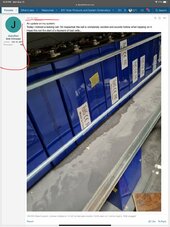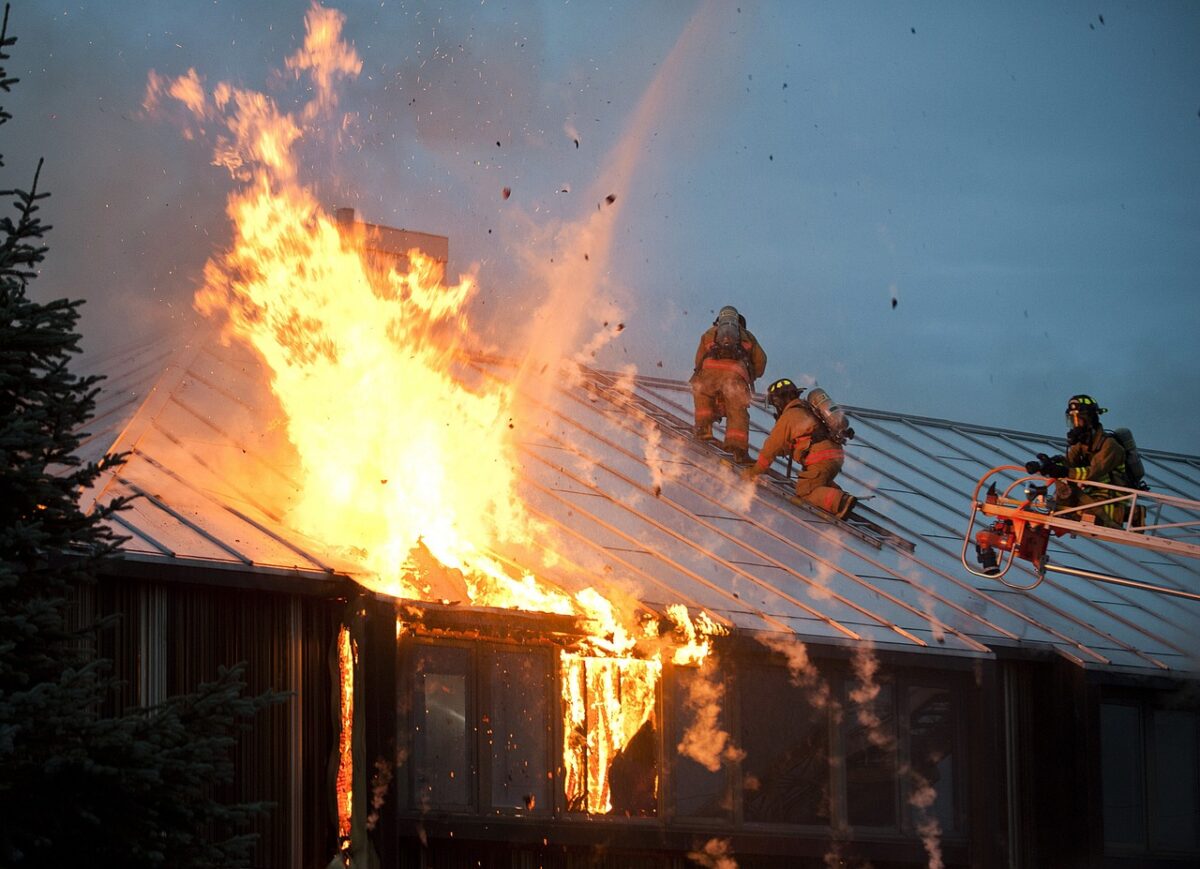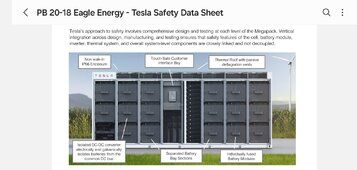Interesting reading. Thermal runaway and gasses released by lfp cells
In recent years, as the installed scale of battery energy storage systems (BESS) continues to expand, energy storage system safety incidents have been a fast-growing trend, sparking widespread concern from all walks of life. During the thermal runaway ...

www.ncbi.nlm.nih.gov
The summary at the end
In this paper, the analysis of the gas component of the battery heat of the LFP was carried out, the simulation model was established in FLACS software, and the law of diffusion of the gas and the explosion of the gas in the storage battery cabin were studied by establishing the diffusion–explosion model.
(1)
Without considering the electrolyte vapor and smoke, the explosion limit of the mixed combustible gas is 4.86–52.2%. When the TR occurs in the middle of the 48 batteries in the prefabricated chamber, the shortest time for the concentration of combustible gas to reach the explosion limit is 9.8 s.
(2)
The maximum explosion overpressure caused by the explosion of combustible gas generated by the TR of 24 and 48 batteries in the middle of the prefabricated cabin is 92.2 and 566 kPa. Compared with the upper left corner and lower right corner, the TR of the battery in the middle of the prefabricated chamber is the least likely to cause serious harm.
(3)
When the combustible gas produced by the TR of 24 batteries explodes at different locations in the prefabricated cabin, the maximum explosive overpressure generated at 5 m outside the prefabricated cabin door is 2.2 kPa, which does not pose a threat to the human body. However, when 48 batteries are thermally out of control, the maximum explosive overpressure can reach 45.7 kPa, which will cause serious harm to the human body.
Long post - sorry.
This test was done with “105ah cells as models”. 280 or 304 would make a difference.

Ppl have these cells in battery cases under their beds and such. You can watch youtube to see the applications and placements. By same token they may have had lead acid at one time too. The interesting part this research is on a medical gov website here in USA but was funded by China. Is that why battery prices have been coming down? Why on medical website? Why not Dept of Energy or UL?
We have been told “LIFEPO is safe”. Over and over. We are dealing with stored energy. Now the question is compared to what for safe.?

Again the videos of van life - tiny homes show ppl with them in living space and integrated in lifestyles as hip solar generators …. Funky fresh .

Another reason Why I hang back to watch others. Big - ol Bucks often do the same because they learned…hang back.
I think we know cells were-are recycled for batteries. Never know what we are really ordering. We are not dealing with new cells in all cases. Despite Chinese advertising. The Chinese are most likely mixing the recovered cells all up. They remove codes and restamp codes. Old cells new cells hard use or little use for mismatch. Part of a battery UL mentions recovered recycled battery cells. Some claim tested…new when used. Lie.
Some cells have seen a rough life while others have not. Mixed matched. They are supposedly tested. Right?. I bet not tested in most cases as time is money and ppl are greedy….lazy. I have noticed most battery companies have never recommended replacing a defective aged cell with new cell in an old pack. Create problems according to warnings. So what is a person to do? But are the Chinese doing this mix match for recovered batteries that are and were sold as new? Hmmmm…. Will Prowse and others bust these battery companies all the time. BUT Is anything ever done to correct the battery short coming - false advertising once exposed?
Some ppl buy raw cells and do their own testing. But are they really matched and new as advertised or just meeting capacity test?
A few things ppl will go nuts about… can you say all your cells are truly matched… are they really recycled or new. If you add a new parallel string to an old parallel battery string are you at risk - inviting a problem? Hmmmm remember lifepo is stated super safe. Or it was. Manufacturers say don’t mix or mismatch…but are they following their own advice.
What is in here for mystery? My battery brand.

A person on here opened one and a company…. man from another brand quickly stated the cells are not quality….stated they were sub-par used cells in himassi. Stated they will never live up to advertising. He was smug…attitude . Himassi disappeared…
Battle Born brand melted down on an Island YouTuber with a popular channel. So expensive vs cheap is not a factor either. Difference was that youtuber yanked video down…hid it away. Wonder why? Some ppl seen that video. Btw it had to be fault of youtuber because battle born are - were supposed high quality. Now that is me being smug back. Sad. Why did youtuber take that video down?
Below is another Battle Born story damaged by loose internal connections. OP could have had the same with his system a loose connection.
The grid service meter leads come in at meter on house use to require retorque inspections about every 10 years…. Service Aluminum wire clamped by alloy -…things happen with time.
Factory sealed Loose connections remarked - blamed for destroyed cells…Battle Born. Loose inside.
Hello all. Posting this in hopes to see if anyone else had the same failure or experience. Back in 2020 I purchased four BB10012 batteries, connected them in parallel using 4/0 cable, decent lugs, torqued terminal bolts to 10 ft/lbs in accordance with battleborn's manual, and installed them...

diysolarforum.com
Kinda why ISLAND YouTuber should of left video up…of the failure.

If old and used then as such should we spec charge them as if new? How do we know what is inside? Without blue tooth - some kind of MONITORING … how do you - we know what the cells are doing in these mystery pack batteries. The poster got alert from victron app about something whacked with battle born. Hmmm … OP had Batrium…monitoring controlling and go by recommended specs at time.
Op had cell vs pack batteries but had a failed cell to vent…the cell case supposedly ruptured in one of his strings. How else did it empty contents as shown? Weirdly OP stated vent had not opened in a follow up. He had threaded rod - compression. If not under compression the cells can expand as safety. Hmmmm… vent not ruptured. Over Compressed? Failure as shown by OP. Now some ppl say no no to compression - Andy’s Off Grid Garage. You know what? What was good practice yesterday is poo today. Imagine your info on medical website bought and paid testing by chinese.
Who knows…actual cause for OP…. we will most likely never know.

Did op really “charge his batteries to 5.53 voltage highest to 5.55v” I posted this earlier….post but nobody said anything. OP 2020 Typo? Happens…

Can kicking.

www.pv-magazine.com












